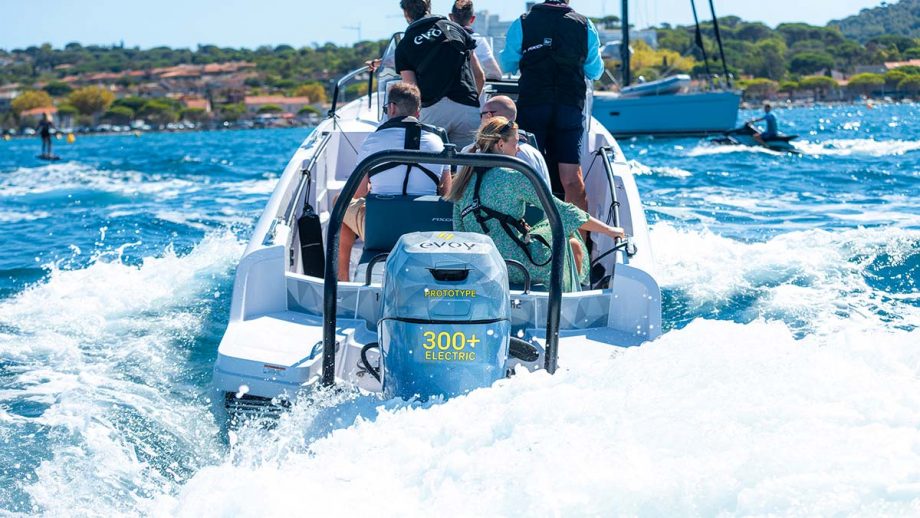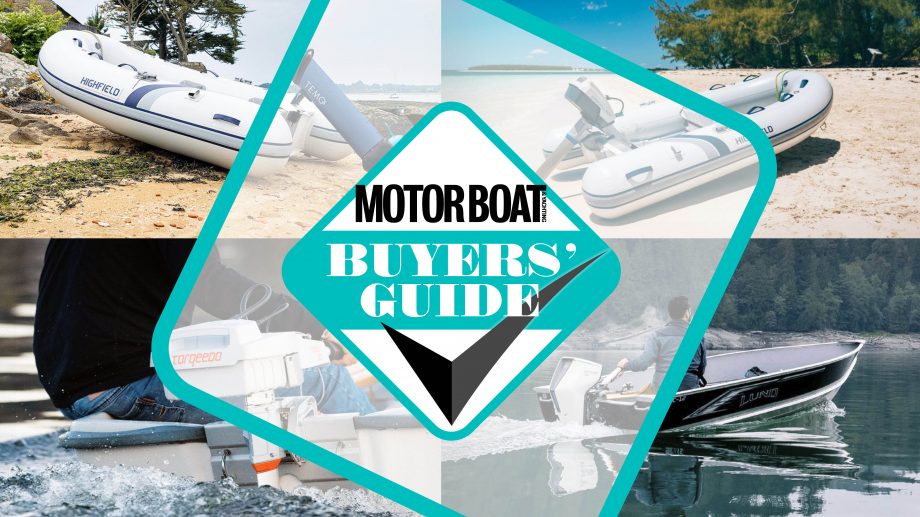RAD40 electric outboard first look: British motor bursting with clever ideas

British start-up RAD Propulsion has launched a new RAD40 electric outboard bursting with clever ideas. Hugo Andreae takes a closer look…

The idea of an electric outboard may be nothing new but the RAD40 drive from British start-up RAD Propulsion appears to be far more than just a conventional outboard leg with an electric motor bolted on top.
Every single element of it has been designed from the ground up to maximise the benefits of electric power. The result is a brand new drive system that is not only much cleaner, quieter and more efficient than a petrol outboard engine but also smaller, lighter, cheaper to maintain and even more manoeuvrable.
In its current 40kW guise (equivalent to around 55hp) it’s powerful enough to propel everything from a 25-knot planing RIB to a 10-knot displacement craft but with a larger 160hp RAD120 as well as a portable tiller steered RAD2 already in development, it’s clear that RAD Propulsion has its eyes set on a much wider market.
British ingenuity
The company was founded by naval architecture graduates Richard Daltry and Dan Hock in 2018. Having already successfully built and sold a business making autonomous surface vessels (unmanned drones) for surveying the sea bed or to act as target vessels for naval training, they turned their attention to helping commercial and leisure boats transition to a greener future.
As self-confessed geeks, their vision was for a fully-integrated drive system that maximised the benefits of electrical power, rather than simply swapping the petrol engine for an electric motor.
Working with their development partners RS Electric Boats, they initially proposed a rim-drive motor with the propeller blades mounted on the inside of a revolving cylinder but while it proved very efficient at speeds up to 10 knots, the performance advantage of a more conventional hub drive propeller at higher speeds and the easier manufacturing processes associated with it eventually won out.
Article continues below…

Most powerful electric outboard? We test the 300hp Evoy Storm

Best electric outboard motors: 8 top options for zero-emissions propulsion
So in 2021 they switched their attention to developing their first electric outboard motor, focussing on every aspect of its design to gain whatever efficiencies and benefits they could.
RAD40: A pancake design
That starts with the motor itself, which uses a 400V axial flux ‘pancake’ design that is not only lighter and more compact than the more common radial motors but also more efficient – a claimed efficiency rating of 96% compared to around 80% for a brushed motor or the mid 90s for a brushless one.
The result is an extremely compact head unit that barely protrudes above the transom, bringing obvious benefits to the boatbuilder and end user. It’s so small and light (less than 100kg) that RAD has been able to reposition the tilting bracket to the front of the unit rather than under the powerhead so that even when fully raised it doesn’t intrude on deck space.
Being so much lower and lighter it also reduces the centre of gravity for tidier handling, although the extra weight of the batteries will more than offset any savings over a petrol engine. The RAD40 also features a state of the art fly-by-wire steering system that is fully integrated into the drive unit with no exposed steering cables or rams.

Thanks to its ‘pancake’ motor the RAD40 head unit is incredibly compact and light
As well as being easier to fit with just a simple electrical relay running from the wheel to the drive unit (plus the two 400V cables and a 12V one), it’s also customisable with variable ratio, end stops, feedback and weighting to suit the size and style of boat.
But perhaps the biggest win is that only the lower part of the drive unit swivels (like Mercury’s new 600hp V12 outboard) allowing the thrust to be vectored through 180 degrees for unparalleled manoeuvrability at low speeds.
With a precise digital throttle control allowing propeller speeds down to 258rpm it should make berthing a doddle, especially when combined with a bow thruster.
Whine-free gears
With no need for a traditional forward and reverse gearbox, RAD has developed its own spiral-cut gears to transfer power from the short vertical shaft to the propeller, all but eliminating the distinctive whine associated with some electric outboard motors.
The lack of any exhaust gases and minimal excess heat has also enabled them to design a much slimmer more hydrodynamic leg with a closed-loop cooling system that relies on the front cavitation plate to act as a heat exchanger.
As well as reducing frictional losses, this means there is no impeller to replace and no corrosive salt water circulating inside the drive.

A two-hour fast charge will restore capacity
In fact, the entire unit is sealed with only a small Gore-Tex vent for pressure equalisation, meaning servicing is limited to changing the anodes once a year and very occasionally refreshing the coolant and gearbox oil.
The final part of the equation is a bespoke propeller with a slimmer torpedo-shaped hub rather than the hollow design of a petrol outboard needed to vent exhaust gases.
With a relatively wide 13in diameter and modestly pitched bronze blades, it is designed to match the almost flat torque characteristics of the motor for strong acceleration and efficiency rather than maximising performance at peak revs.
Other innovations include a wireless kill-cord system called RADtag, a digital throttle with a neutral safety detent and NMEA integration with existing navigation equipment.

Look out for our full test drive of the RAD40-equipped RS Pulse 63, coming soon
Pulse Power
When fitted to the latest RS Pulse 63 this allows for a top speed of 23 knots but also a range of up to 100nm at 5 knots from its 63kWh battery or any variation in between – a built-in display gives a real-time read out of remaining range as well as battery capacity.
Charging takes two hours using a fast charger or eight hours from a standard mains or shorepower socket. Although developed in conjunction with RS Electric Boats, the RAD40 will be available for other boatbuilders and re-engining projects. It shares the same bolt pattern as most petrol outboards and can fit any transom angle from 0-14 degrees.
Retail prices start at £28,000 for the engine with battery packages from £15,000 for a 20kWh rising to £30,000 for 60kWh.
First published in the October 2023 issue of MBY.
This article RAD40 electric outboard first look: British motor bursting with clever ideas appeared first on Motor Boat & Yachting.




